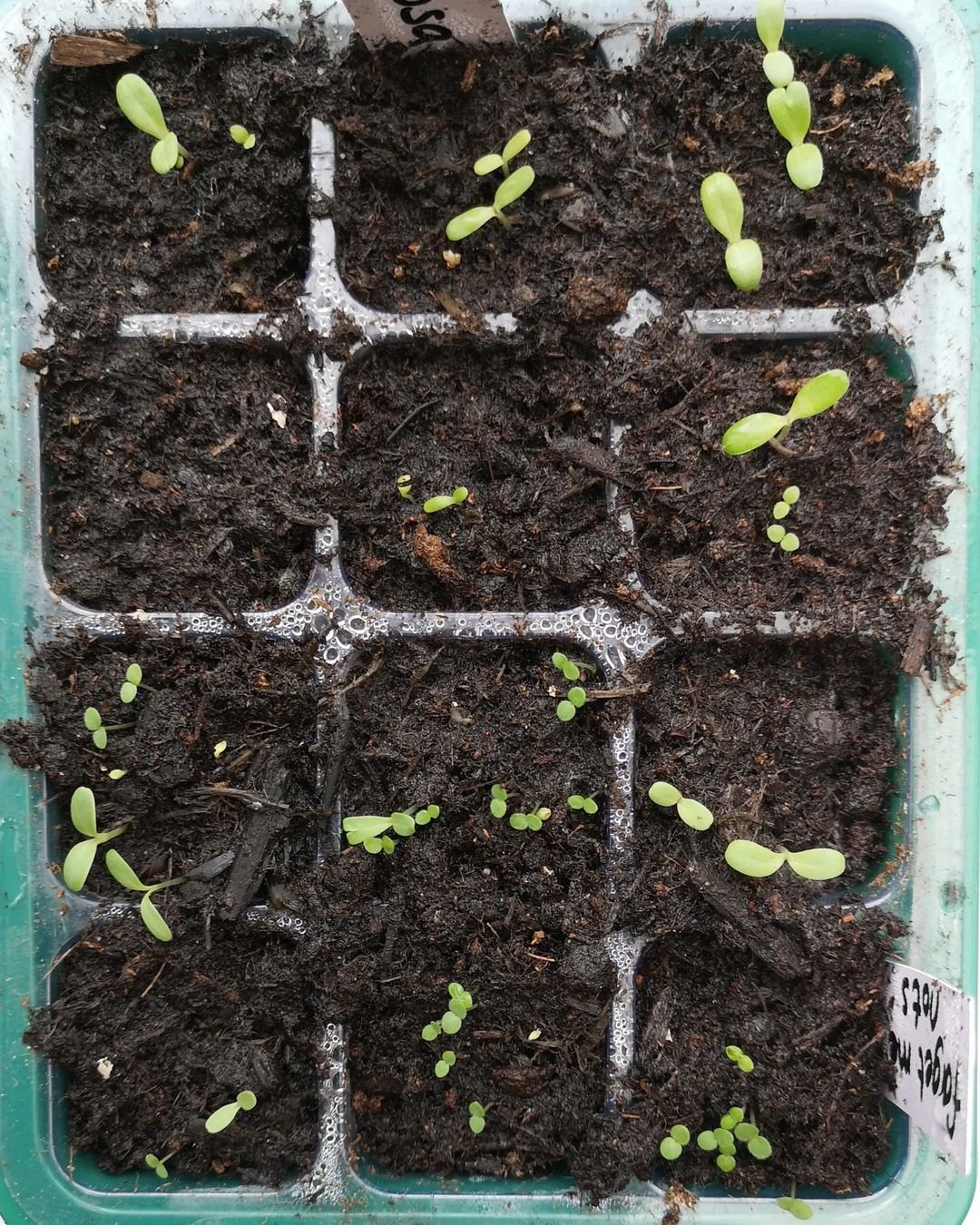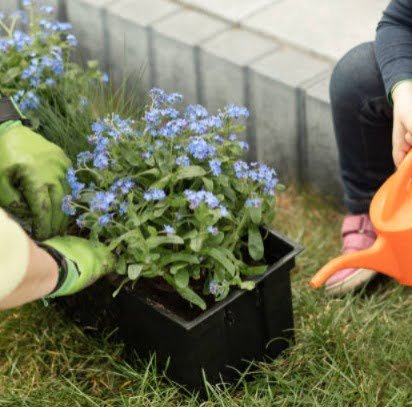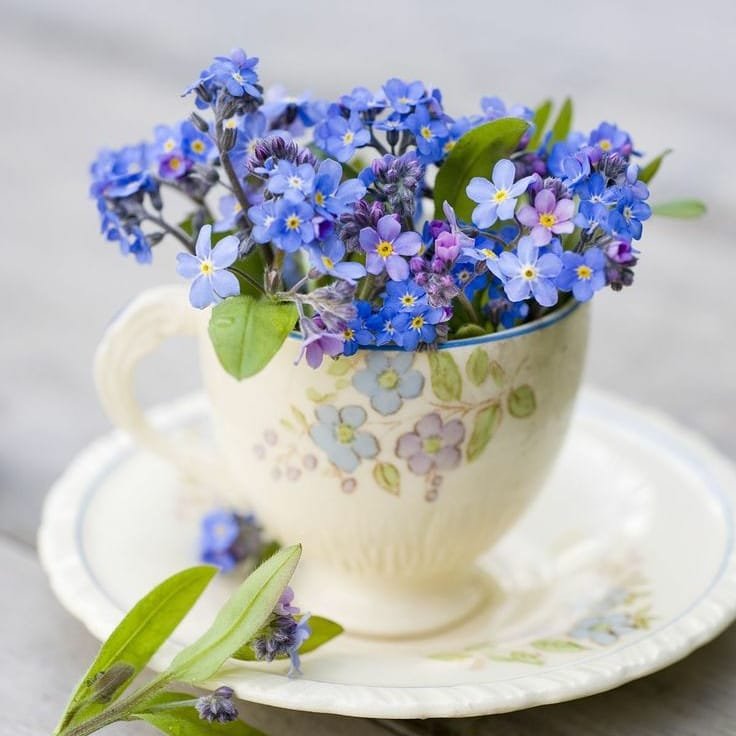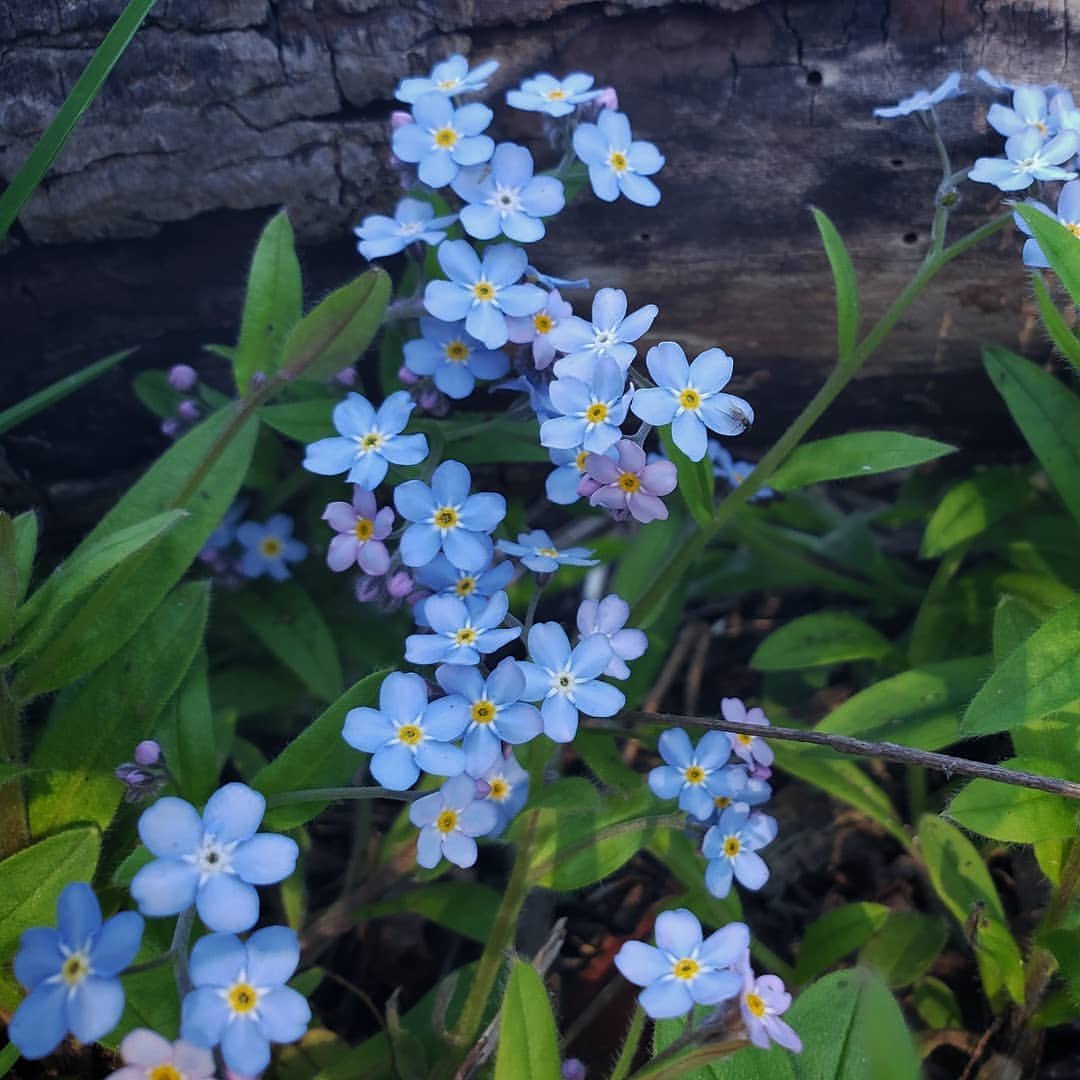Explore the enchanting world of Forget-Me-Not flowers with our comprehensive gardener’s guide. Discover planting tips, care techniques and creative uses for these delicate blooms in your garden.
With their cheerful blue blossoms and delicate beauty, it’s no wonder forget-me-not flowers have been cherished by gardeners for centuries. These low-growing, spreading plants add a whimsical touch to gardens and landscapes with their clusters of tiny, flat blooms.
More than just pretty faces, forget-me-nots are also symbols of faithful love and treasured memories in the language of flowers. Their name comes from an ancient legend about two lovers walking by a river when the man retrieves the flowers for his beloved after they fall in, uttering “forget me not” before drowning.
In this guide, you’ll learn all about growing, caring for, and enjoying the unique charms of forget-me-not flowers in your own garden spaces.
Here’s a short information chart about the Forget-Me-Not flower:
| Aspect | Details |
|---|---|
| Botanical Name | Myosotis species |
| Common Name | Forget-Me-Not |
| Plant Type | Perennial or biennial |
| Zones | Typically zones 3-9 |
| Sun Exposure | Part shade to full shade |
| Soil Type | Moist, well-draining |
| Watering | Regular, moderate moisture |
| Growth Habit | Clumping, low-growing |
| Height/Spread | 6 inches to 2 feet tall, spreads 6-12 inches |
| Special Features | Small, delicate blue flowers with yellow centers; self-seeds readily |
What are Forget-Me-Not Flowers?

Forget-me-nots (Myosotis spp.) are herbaceous flowering perennials in the Boraginaceae or Borage family, native to Europe and Asia. Over 200 species exist, with the most common ornamental varieties being:
- Woodland forget-me-not (Myosotis sylvatica) – Naturalizes readily in moist, shady areas.
- Early or Alpine forget-me-not (Myosotis alpestris) – Compact, low-growing plants that bloom earlier.
- Water forget-me-not (Myosotis scorpioides) – Thrive in very moist soil and around water features.
The petite, flat flowers typically have five delicate petals fused into a circular bloom just 1/4 to 1/2 inch wide. While most are a lovely sky blue shade, they also come in pink, white, and yellow variations depending on the species.
The plants form dense mats or mounds with oblong, bright green leaves. Forget-me-nots spread easily by self-seeding and can rapidly naturalize to create a soft, blanketed effect.
Easy to Grow & Deer Resistant

One of the top reasons gardeners love forget-me-nots is their easygoing, carefree nature. These cheery little bloomers require minimal effort to thrive:
- They readily self-sow and spread to fill in bare spots.
- The plants are deer, rabbit, and drought resistant once established.
- Forget-me-nots make excellent ground covers that out-compete weeds.
- Cool temperatures and shaded areas allow them to bloom longer into summer.
- Low maintenance – just need an annual dose of fertilizer and regular water.
- Attract pollinators like bees and butterflies.
With their resilient, undemanding habits, these flowers are practically foolproof for beginner gardeners and make lovely, long-lasting spring blooms.
Growing Forget-Me-Not Flowers

Forget-me-nots thrive in partial to full shade and moist, nutrient-rich soils. The ideal planting spots are in shaded beds, beneath trees and shrubs, on woodland edges, or around ponds or streams. They also do well in containers in filtered sunlight.
To plant seeds directly, wait until late fall or very early spring when temperatures are cool, around 50-65°F. Sow them on the surface of prepared soil or lightly cover with 1/4 inch of soil.
Keep the planting area moist until seedlings emerge in 1-2 weeks. For quicker bloom time, start seeds indoors 6-8 weeks early to transplant out after hardening off.
Established plants spread readily via self-seeding and creeping stems that root into the soil. However, it’s easy to divide clumps in early spring for replanting if desired.
Providing the Ideal Conditions
Getting the soil, water, and sun conditions right is key to growing lush, floriferous forget-me-nots. Here are their preferred conditions:
Soil
These wildflowers prefer a rich, humus-based soil that stays consistently moist. Amend planting areas with compost, aged manure, or peat moss to create a moist, fertile base.
An ideal pH range is between 6.0-8.0. The roots have a hard time accessing nutrients if soils are too acidic or alkaline. Do a soil test first if needed.
Water
Proper moisture is critical for the best flowering and growth of forget-me-nots. These plants simply cannot tolerate dry soils for very long. Aim to keep soil evenly moist but not saturated.
Water established plants about 1 inch per week during the growing season. New plantings and containers require more frequent irrigation to keep the soil from drying out.
Sun
While forget-me-nots do best in partial shade, afternoon sun is often too intense. Choose a planting site that receives 2-6 hours of dappled sunlight per day or morning sun only.
Too much shade results in leggy plants with fewer blooms. But too much midday sunlight causes plants to wilt and go dormant prematurely.
Temperature
Cool temperatures between 40-70°F are ideal for forget-me-nots. They easily tolerate colder conditions and late frosts. But once summer arrives, the higher temperatures cause dormancy.
As the heat sets in, foliage may turn yellow and die back before new growth emerges in fall with cooler temps. Mark where they are planted so you don’t mistake plants for being dead.
Pollinators Love Forget-Me-Nots
Adding forget-me-nots to your garden is an excellent way to attract pollinators like butterflies, bees, and other beneficial insects. The small, shallow flowers offer up an accessible landing pad filled with nectar and pollen treats.
These early bloomers also provide an essential food source for newly-emerged pollinators in late winter and early spring when few other flowers are available. Bees, hoverflies, butterflies, and more will flock to the vivid blue clusters tucked among your trees and shrubs.
Thanks to their ability to naturalize and readily self-sow, forget-me-not plants expand into pollinator-friendly drifts and carpets. The spreading foliage creates habitat and shelter areas too.
To encourage even more pollinator appeal, allow some plants to go to seed each year. The bushy seed heads offer tasty food sources during the summer when flowering finishes.
Care & Maintenance

Once established, forget-me-nots require very little maintenance aside from:
- Watering the soil deeply during dry spells to prevent plants from shriveling and expiring prematurely.
- Removing dead flowers and stems regularly to prevent seeding and control spread.
- Applying compost, leaf mold, or balanced fertilizer once yearly to replenish soil nutrients.
- Dividing crowded clumps every 3-5 years in early spring.
That’s it! These plants are incredibly resilient and thrive on a bit of benign neglect. The cooler temperatures and partial shade prolong their spring bloom time.
Where desired, allow some self-sowing each year to expand naturalized areas and drifts. For tighter clumps, deadhead consistently to prevent prolific reseeding.
Using Forget-Me-Nots

With their soft, dynamic spreads and pretty blue color, forget-me-not flowers have many beautiful uses around the home landscape. A few design ideas include:
- Underplanting beneath deciduous trees and shrubs to create carpets of early spring blooms.
- Woodland garden accents along paths, pond/stream banks, and shady borders.
- Adding splashes of cool blue to rock gardens or between pavers/hardscaping.
- Container gardening mixes to trail over the edges of pots and planter boxes.
- Ground covers and edging to blanket areas with a lush, naturalized look.
- Cutting gardens for spring bouquets and arrangements.
The spreading, self-sowing habit of forget-me-nots allows them to intermingle beautifully with spring-blooming bulbs like daffodils, tulips, and grape hyacinths. Their delicate foliage complements bolder upright blooms.
Let forget-me-not flowers weave their enchantment through shady borders, understudy trees, or soften the edges of water features. Their cheery little blossoms create a magical look in any tucked-away, secluded nook.
Forget-Me-Not Varieties to Try
While true blue is the classic color for forget-me-nots, there’s no need to forget the lovely assortment of other shades available too! Here are some beautiful varieties worth growing:
- Sylva Series – Early blooming with a mix of blue, rose, and white flowers on compact plants.
- ‘RoseEball’ – Distinctive pastel pink spherical blooms instead of the typical flat flowers.
- ‘Bonnie Opale’ – Sky blue blossoms that fade to creamy white with pink undertones.
- ‘Victoria Azure Blues’ – Long-blooming azure blue flowers on vigorous, heat-tolerant plants.
- ‘Poet’s Forget-Me-Not’ – The cheerful true blue species with bright yellow centers.
- ‘Sunray’ – Stunning bi-color pink-and-blue flowers that bloom in early spring.
As you can see, the color diversity expands far beyond the traditional pure blue shade these flowers are known for. Consider planting a variety of forget-me-not types for an enchanting rainbow of blooms next spring!
Make the Most of Forget-Me-Not Magic

With their whimsical blue blossoms, ability to readily self-sow, resilience in shady spots, and low-maintenance needs, it’s hard not to appreciate the humble charms of forget-me-not flowers. Add these delightful bloomers to your landscape and you’ll soon find them weaving their magic all around.
Let naturalized drifts and carpets spread to fill in bare spaces for season-spanning color. Use planted clumps to highlight borders, accent pathways, or brighten up containers. The versatile growing habits of forget-me-nots make them useful in so many garden settings.
Most of all, enjoy the sweet nostalgia and sentimental meanings these beloved bloomers have symbolized throughout the centuries. Cherish their beauty while it lasts by cutting little bouquets, allowing some plants to reseed, and revel in their early spring return year after year.
By providing the ideal conditions and giving these flowers a chance to settle in, they’ll soon become treasured, long-lasting additions to your landscape that you’ll never want to forget!
Pingback: The Charm of Forget-Me-Not Flowers: A Gardener&...
Pingback: Explore 20 Fascinating Flowers Beginning with F - Gardener's School
Pingback: Top 10 Baby Blue Flowers to Add Elegance to Your Landscape